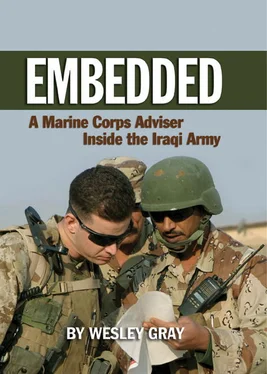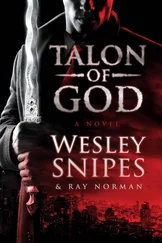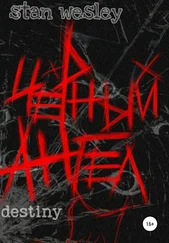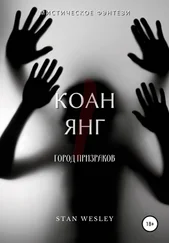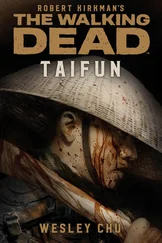The atmosphere changed as we moved farther south. Here civilians standing outside their cars gave us looks that said, “I am going to cut your heart out with a spoon.” Things changed when we get near Baghdadi, a small town about five miles north of Al Asad. As I write this Baghdadi is under the control of Colonel Shaban, the Iraqi police commander in the area who quelled the insurgent threat with little help from the Americans.
It was relatively peaceful in Baghdadi. Rolling through the town, my biggest threat was not IEDs but ensuring I did not run over a kid while driving the Humvee. They lined the streets, begging and yelling, “Mister, mister, give me! We love America, give me, mister.” Some kids gave us a thumbs-up, while others waved both hands above their heads. Parents waved and gave us bright smiles. Captain Chin, our turret gunner, sometimes tossed a bag of candy and toys to the kids. The instant the candy hit the ground, I witnessed true war. The kids turned into animals. The boys punched the girls to the ground and then proceeded to beat one another. They resembled a pride of starving lions after a large kill, each lion vying for his fair share, snapping and biting at the members of his own pride. These people are poor.
Past Baghdadi was a long stretch of road that rested between a cliff and the Euphrates River. The arrangement made for both an excellent location for attacks and a great scenic route. As we rolled down this section of road, Captain Chin and the old MiTT crew in the Humvee with us enjoyed scaring us. During one drive down this road Capt. Peter Morales started counting loudly, “Three, two, one—bang! This is where we got hit a few weeks back.” Here I was, trying to drive my first combat convoy, scared to death, and I had these jokers trying to rev me up. Concealing my nerves, I responded, “Sir, are you trying to scare me? It ain’t working.” I heard a chuckle from my response and we continued along the route.
We finally reached the turning point where Route Bronze turns into Al Asad Road—the equivalent of getting an invincibility star on the Super Mario Brothers Nintendo game. We sped up and tried to cover as much ground as possible, completely forgetting about the enemy. Everyone on the old MiTT claimed this final three-mile stretch of road leading into Al Asad Airbase had never seen an IED and never would. I took their word for it and slammed on the gas in an attempt to catch up with the Iraqi Humvee ahead of me.
Once on Al Asad we had sugar-plum visions of what looked like a kingdom of POGs (“people other than grunts,” a derogatory term for nonactive combat participants), civilian contractors, and desk jockeys. Al Asad Airbase is another fortress we erected in Iraq. We drove around the base to see the magnificent structures. The disgruntled old MiTT members talked about how amazing life was in Al Asad.
The old MiTT crew was jealous for good reason. Al Asad comes complete with four different KBR chow halls (each the size of a football field), huge gymnasium structures complete with swimming pools and basketball courts, a Moral Wellness and Recreation Center that could fit an entire Marine battalion inside, and a shopping section with a Subway, Burger King, Pizza Hut, and an AT&T phone center. Were we really in Iraq?
I was excited about luxury living again. My excitement ended abruptly, however. As we toured the base, we moved farther from the amenities and closer to the outer regions of the base. We were going to the Iraqi brigade camp. A motivated Marine, decked out in combat gear, asked for rosters, verified our convoy clearance, and greeted us upon our entrance into the U.S.-controlled fortress. Everything was methodical and organized. The situation at the Iraqi camp was completely the opposite.
Approaching the Iraqi entrance into the brigade camp there were two jundi , one asleep, and the other trying to stay in the small portion of shade that the guard shack provided. The guard’s weapons were in the guard shack, sitting on the ground, filthy. The guards were very friendly. Passing through the gate, the jundi awoke, jumped up, and with a wide grin gleefully yelled to the convoy, “As salama aleikum” (Peace be upon you). Welcome to the Second Brigade Iraqi camp, I thought to myself. God save us.
We twisted along the one-lane paved road that snaked through the brigade camp until we reached the MiTT camp. We pulled our Humvees into their camp, which was a bunch of swahuts and other small facilities surrounded by a fence of Hesco barriers. Our accommodations were rugged. The brigade MiTT stuffed sixteen of us into a swahut. After we settled in, our next stop was a KBR chow hall, a treat we had not had in almost two weeks.
Entering a KBR chow hall was equivalent to entering heaven. There were lines of tables, many overweight civilian contractors and service members, and large flat screen televisions playing Fox News and SportsCenter at all times. On the perimeter of the enormous indoor spaces were various buffet-style choices. You had the option of the fast food lines, where you could order any fast food imaginable, or you could hit the main course line, where you could always get a healthy dose of steak, lobster, shrimp, chicken, or lamb. If you were not satisfied with a plate full of fast food and a gourmet steak, you had the option of indulging in the sandwich bar, where double or quadruple meat is standard.
If you were still hungry you could move over to the Mexican buffet to get enchiladas, tacos, quesadillas, or beans. If you wanted some greens to go with all your other chow, no problem. There were two identical fruit and salad bar stations in the facility.
At this stage you might have four or five plates of food on your tray. But then there was the comprehensive ice cream bar featuring a variety of flavors of ice cream, yogurt, or sherbet. If you weren’t satisfied with the ice cream sprinkled with fudge shavings, sprinkles, and strawberry syrup, you could head over to the pie and fine desserts bar, where you could get four varieties of cheesecake, walnut pie, pumpkin pie, chocolate cake, and “you name it they probably have it” pie. KBR chow was outstanding in my opinion. Regulars at the facility complained, but KBR put to shame some of the best restaurants I have been to in the States. Thank you, American taxpayer!
After recouping, in one meal at the KBR chow hall, the seven pounds I had lost in the previous two weeks, I waddled back to our swahut on the brigade camp. At 2100 we were told that the buses returning the jundi from Najaf were coming in at 0400 the next day. It was time to hit the rack.
Staring at the tin roof ceiling of the swahut, Lieutenant Adams and I came up with estimates for our chances of death in Iraq. It was a sick exercise, but talking about our mortality was more therapeutic than internalizing the worry and stress associated with these thoughts. Based on our calculations, we had about 270 potential meetings with the grim reaper. We had 180 convoy legs to do for leave runs, an estimated forty combat missions similar to Kaffijiyah and Bani Dahir, and perhaps thirty random chances associated with miscellaneous events. I did not include potential small-arms attacks on foot patrols or mortar attacks. For argument’s sake we agreed that the total number of chances at death was five hundred.
Heck, I had lived in West Philly for two and a half years and on Chicago’s South Side for two years. If I had a random chance of being killed each day I’d lived in those areas, that would mean I’d survived 1,642 (365 days x 4.5 years) shots at death, or three times the risk of my tour in Iraq.
An important lesson about Iraqi culture is that time lines are meaningless. The returning jundi arrived at the brigade Iraqi camp at about 1100, seven hours later than scheduled. The inbound jundi arrival scene was another lesson in Iraqi culture: Iraqis are, by American standards, lazy.
Читать дальше
